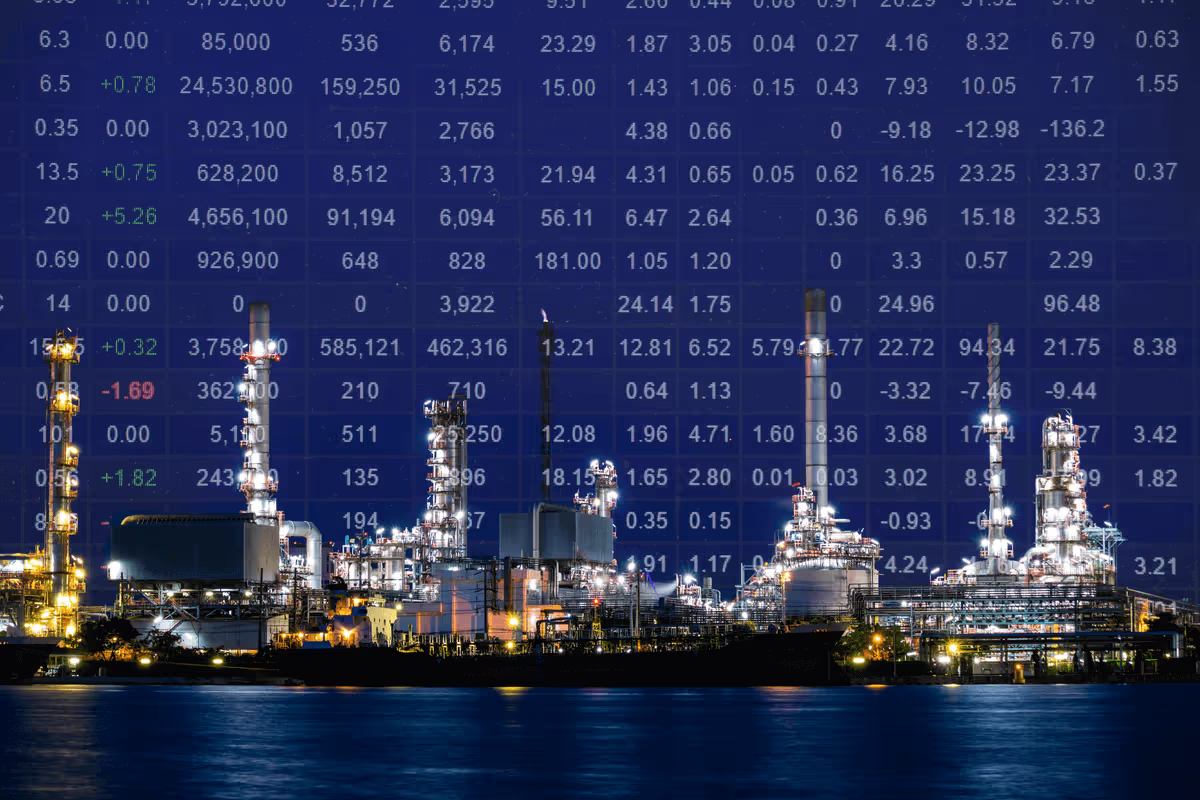

Introducing the Signal Ocean Platform Port Congestion API.
Your gateway to valuable insights for dry bulk and tanker vessel global port congestion levels. With the Port Congestion API, you can access an overview of congestion worldwide, with detailed insight into port congestion across different regions. Stay ahead of the game and make informed decisions by leveraging this powerful tool from Signal Ocean.
Port congestion can significantly impact the maritime industry and disrupt the entire maritime logistics chain. Ongoing port congestion has led industry stakeholders to closely monitor global port utilization on a daily basis. In 2021, congestion levels in the bulk and container segments reached unprecedented heights, highlighting the urgent need for tools to assess the impact of port congestion on freight market dynamics. Various factors contribute to congestion, including unforeseen external events such as adverse weather conditions and internal factors such as inadequate infrastructure capacity due to limited resources, labor, and space. Efficient customs clearance is critical in ensuring the smooth flow of goods between export and import destinations, impacting international trade and the global supply chain.
By closely examining the causes and effects of port congestion, industry participants can gain valuable insights into the challenges faced by the maritime sector and develop strategies to mitigate its impact on the global supply chain. Signal Ocean's latest Port Congestion dashboard and Port Congestion API empower users to track real-time and historical congestion levels across ports, countries, and geographic areas for dry and tanker vessels. By incorporating incremental updates as fresh data becomes available, users can ensure that their analysis remains up-to-date and comprehensive, empowering them to make well-informed decisions based on the most recent information.
Signal Ocean's Port Congestion API is a powerful tool that provides users with access to ten years of comprehensive historical data for both dry bulk and tanker vessels. This data includes detailed information on vessel counts, arrivals, departures, and estimated wait times. To facilitate seamless integration and utilization, the data is available both as an API and through a Python SDK, offering flexibility and convenience for developers and users alike. With this extensive historical data at their fingertips, users can gain valuable insights and make informed decisions for their operations, enhancing international trade efficiency.
We conducted an extensive examination of port congestion a year ago, specifically focusing on the growing congestion in Chinese ports within the dry bulk segment, particularly leading up to 2021. Through meticulous analysis of the available data, our aim was to uncover insights into the evolution of congestion and identify any significant changes related to vessel sizes. By revisiting this topic, our objective is to provide a comprehensive and up-to-date analysis of the recent developments within the dry bulk segment of Chinese ports, as well as examine the tanker situation in light of the Black Sea geopolitical tensions and shed light on any notable trends that have emerged since our previous assessment.
In the following sections, we use Signal Ocean's Port Congestion data to track and monitor the extent of vessel congestion in key regions such as China, the Black Sea, Australia, and Brazil. The images used in this analysis were obtained from the Congestion dashboard of the Signal Ocean Platform. The platform's API is leveraged to retrieve the necessary data for visualisation purposes, ensuring accurate and up-to-date information is presented.
I. DRY BULK
CHINA Congestion Impacting Small, Handysize, Supramax, and Panamax Vessels
The current situation in China reveals congestion issues particularly affecting vessels of smaller sizes, including Handysize, Supramax, and Panamax. This congestion has implications for the efficient movement of goods and trade in these specific vessel categories, affecting the global supply chain.
In Image 1, we can observe that apart from the exceptional year of 2021, which witnessed a significant surge in Chinese port congestion for dry bulk vessels, the recent year shows notably lower volumes compared to the same period in the previous two years. Interestingly, the escalation of congestion now appears to be shifting away from the Capesize vessel category and more towards Panamax and Supramax vessels, exerting upward pressure on congestion levels since late April.
The lifting of the ban on Australian coal imports may have contributed to certain bottlenecks around Chinese ports, as there is now an increased influx of shipments alongside stronger Chinese grain shipments from Brazil. Based on the most recent updated data, there is a projected increase of more than 1,200 vessels, marking a 20% rise from late February. However, it's worth noting that the estimated port days for all vessel classes are currently lower than the average days observed in the past two years. Specifically, in the last month, the number of port days has decreased to three, in contrast to four days recorded in both 2022 and 2021. This suggests a recent trend of improved efficiency in port operations, resulting in shorter turnaround times for vessels across various classes.

BLACK SEA Congestion around Small size
In the Black Sea region, there is evident congestion specifically impacting smaller-sized vessels. As depicted in Image 2, a few days prior to late April, the number of congested vessels in the Black Sea reached its highest point since the beginning of this year, surpassing the levels observed in 2022. The ongoing grain geopolitical conflicts between Russia and Ukraine have contributed to critical port congestion issues for small bulker vessels that have yet to be resolved. Despite some signs of improvement, there remains a significant challenge in terms of port days. Recently, congestion levels have dropped below the 500-vessel mark, whereas during a similar period last year, Black Sea port congestion reached its peak at around 600 vessels.
Interestingly, there has been some improvement in the situation, as the port days estimation for all vessel classes currently stands at nearly four days, compared to an estimation of around six days in mid-February. These insights highlight the complex dynamics at play in the Black Sea, where congestion for smaller vessels persists. Still, there are indications of progress in terms of reduced port days for efficient vessel operations.

AUSTRALIA Congestion Capesize / VLOC Increasing
For Capesize and Very Large Ore Carrier (VLOC) vessels in Australia, there is currently a concerning increase in congestion specifically impacting these larger vessel classes. Image 3 shows a significant peak in Australian VLOC/Capesize vessel congestion after mid-April, reaching over 150 vessels. However, the latest updated data indicates a downward revision, with congestion levels falling below 120, similar to the levels observed last year. Nonetheless, it is important to remain cautious about the future outlook.
The estimation of port days is still elevated, currently standing at around six days, compared to four days during a similar period in 2022. This suggests that there is still work to be done to address congestion and improve operational efficiency at Australian ports. Efforts should be made to enhance port infrastructure, optimise scheduling, and streamline logistics to alleviate congestion and reduce port days.

EC SOUTH AMERICA Congestion Capesize / VLOC Decreasing
In contrast to the congestion picture in the Australian region, there has been a noticeable decreasing trend in congestion levels observed around the ports on the east coast of South America, particularly for Capesize and Very Large Ore Carriers (VLOCs). As evidenced by the available data, congestion levels in this region have shown a clear downward trajectory, reflecting improvements in the efficient movement of larger vessel classes and facilitating smoother maritime trade. Notably, there was a peak in congestion observed towards the end of March, with the number of congested vessels exceeding 60. However, the latest updated data indicates a significant drop to 46 vessels.
Moreover, the port days estimation has also improved, currently standing at eight days compared to 12 days during a similar period in 2021. This positive trend is a promising development for the region, as it signifies enhanced port operations and improved logistical efficiency. It suggests that measures taken to optimize scheduling, enhance coordination among stakeholders, and improve port infrastructure have yielded positive results.
This decreasing trend in congestion is beneficial for the timely and reliable delivery of goods and trade in the region, allowing for more efficient utilization of port facilities and minimising potential delays. By continuing to monitor the situation and sustain the implemented measures, the east coast South America region can maintain a favourable environment for Capesize and VLOC vessel operations, supporting uninterrupted maritime trade.

II. TANKER
CHINA Congestion INCREASING
Looking at Chinese port congestion for tankers, the data shows that port congestion has reached a peak comparable to the levels recorded in 2021. As depicted in Image 5, the most recently updated data highlights a significant surge in congestion, surpassing 200 vessels. Furthermore, the number of days vessels are expected to spend in port is estimated to stand at four. This estimation suggests that the congestion results in longer waiting times and potential delays for tanker vessels in Chinese ports, affecting international trade.

The recent surge in congestion of tanker vessels around Chinese ports is predominantly driven by the increased activity and presence of Suezmax crude tanker vessels. The demand for seaborne crude oil shipments from the West, particularly in the context of trade with the East, has led to a notable increase in the number of Suezmax vessels navigating Chinese waters.
The involvement of Suezmax vessels in such international trade activities highlights their importance in meeting the region's energy needs. However, the concentrated presence of these vessels has led to congestion challenges (image 6), potentially impacting port operations, vessel scheduling, and overall efficiency in handling crude oil shipments. This congestion scenario mirrors issues seen at west coast ports affecting global trade and the global supply chain.

BLACK SEA Congestion impacting MR
The congestion in the Black Sea region is notably impacting the MR (Medium Range) vessel class, which is predominantly used for transporting refined petroleum products. As depicted in the available data, there has been a concerning increase in congestion levels, specifically affecting MR vessels in the Black Sea. Today's port congestion levels, as depicted in image 6, have reached nearly double the levels observed two years ago, which were around 40. This upward trend in congestion indicates a growing challenge in port operations and the efficient movement of vessels as we approach the end of the second quarter.
The rising congestion is creating challenges for the efficient movement of MR vessels, potentially leading to delays and disruptions in the transportation of refined petroleum products in the region. This congestion can be attributed to various factors, including increased demand for refined products, infrastructure limitations, and port operational inefficiencies.

It is crucial for industry players and relevant authorities to closely monitor the situation, identify bottlenecks, and take timely actions to address the congestion issues. Timely actions are essential to prevent congestion from further escalating, as it can have adverse effects on supply chain efficiency, trade flows, and overall economic stability. Continued monitoring and analysis of congestion levels and collaborative efforts to implement appropriate solutions will play a vital role in managing the increasing congestion and maintaining a sustainable and resilient port system for future growth and development.
Stay informed and stay ahead with our comprehensive analysis and trends on port congestion. For the latest updates and insights, make sure to visit the Signal Ocean Newsroom website page.
If you're interested in learning more about our Congestion API data product or have any inquiries, please don't hesitate to reach out to us. Contact our research team at research@thesignalgroup.com for research-related inquiries. For sales-related inquiries, our sales team will be happy to assist you. You can reach them at sales@thesignalgroup.com.
We value your interest and look forward to providing you with the information and solutions you need to navigate the dynamic world of port congestion and optimise your business operations.
For subscription to our FREE weekly market trends email, please contact us: research@thesignalgroup.com. For the latest updates and insights, make sure to visit the Signal Ocean Newsroom website page. Click here to request a demo.
-Republishing is allowed with an active link to the source




Ready to get started and outrun your competition?















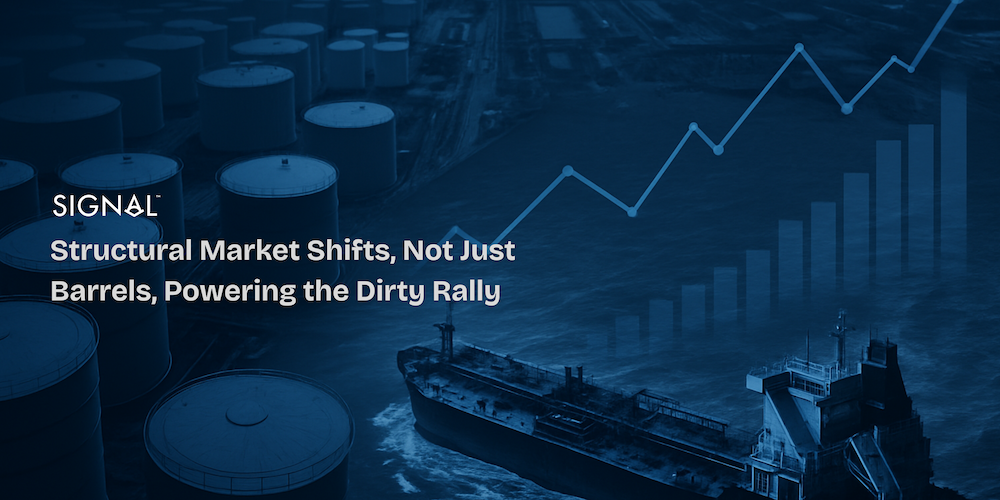


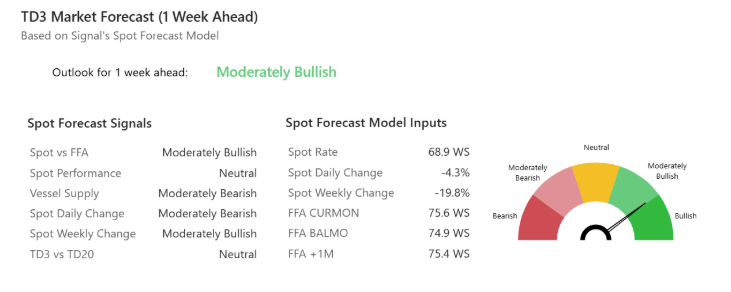



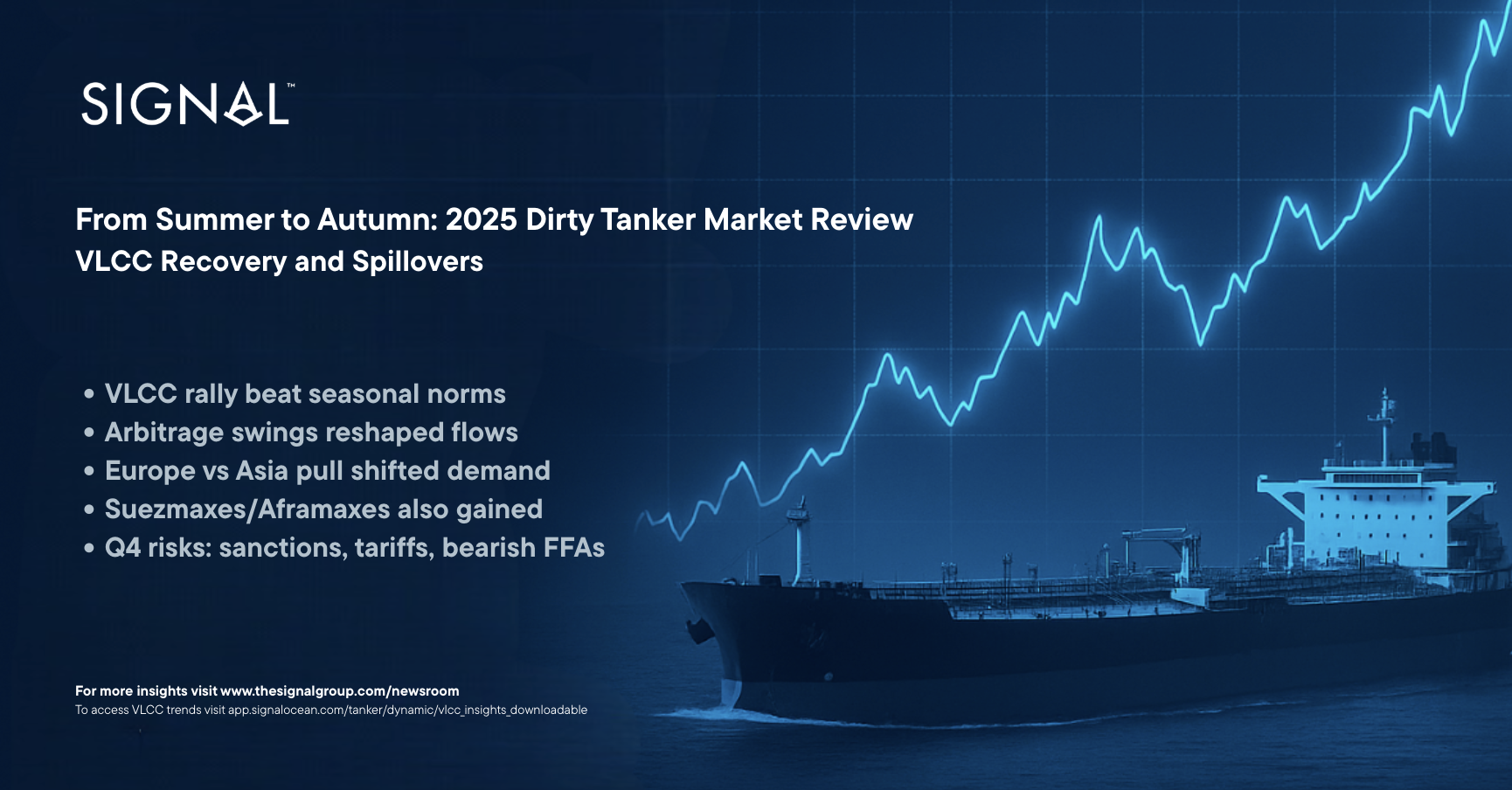
.png)
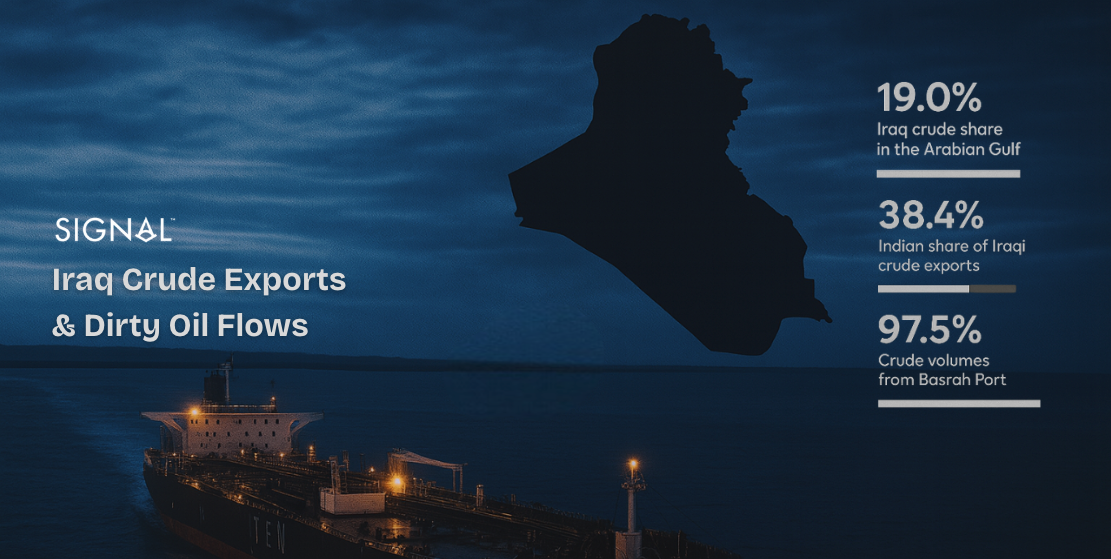




.png)

.png)

.png)
.png)

.png)







.avif)



.avif)




































